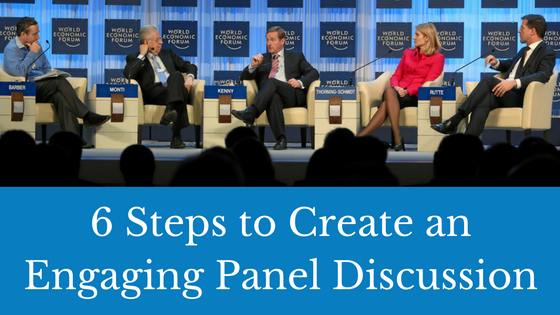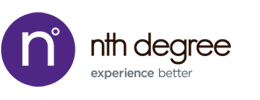
Panels are a mainstay in any conference agenda. They give your audience the opportunity to hear a variety of perspectives in one session. They are also a great way to get influential speakers involved that might not have the bandwidth (or the desire) to prepare a solo presentation. A panel discussion can provide a wealth of information - but if not prepared well, it can become a major waste of time for your audience.
Follow these six steps to get the most from your next panel:
1. Identify the right mix of panelists and choose your moderator wisely.
This might go without saying, but I'll say it anyway: you should always strive for diversity with your panel. Diversity of opinion, gender, industry, ethnicity, experience, age, etc. The more varied perspectives you have, the more beneficial the discussion will be to your audience.
The chicken-and-egg question here is whether or not you start with the moderator or the panelists? It depends. Starting with the moderator adds credibility to the panel from a speaker's point of view and you have access to the moderator's network for panelists. However, I've done it both ways and found success. Do what works best for you.
2. Schedule the prep call.
You have your panelists and moderator! Great work. Now it's time to make sure everyone is prepared. The best time to have the prep call is about two weeks before the event. If done too far in advance, you risk forgetting what you accomplished in the discussion. If done too soon, you might not have enough time to revise the questions and it could feel rushed. Find three times that work for the moderator and block his/her calendar so they don't get double-booked (if you followed step 1, this moderator is probably in high-demand). Select a variety of time options (not all on one day, different points throughout the day, etc.) and be sure to take time zones into consideration. Send the times to the panelists, either via your email calendar application or Doodle. Once you've finalized a time, send an invite to the panelists and moderator with an agenda so they know what to expect from the call.
3. Create a panelist dossier for the moderator.
The moderator will be effective if they have comprehensive background information on each speaker. I've found it best to include:
- A bio & headshot.
- LinkedIn & Twitter profiles.
- News mentions of the individual, their organization, or both.
- A complete history of the customer's relationship with your company (for customer panels).
- Any notes from your conversations with the speaker on your expectations for the panel.
4. Develop the panel questions to get the most out of your speakers.
It’s important to involve the moderator in panel question development - but it's up to you on how early you want to bring them in. I've found that you get the most from a moderator when you present them with a list of questions from which to react. After the moderator has refined the list, send it to the panelists at least two full days before the prep call. The objective of the prep call will be to whittle it down further.
- Tell a story. Don't ask yes/no questions (unless you're taking a poll).
- Share something new/innovative being done.
- Give quantifiable results. These examples will be what the audience finds most actionable.
- Provide examples of when they've made mistakes or can share lessons learned from an experience.
The prep call is the closest you're going to get to a run-through for the panel, so treat it as such. The moderator should run the call as they will run the discussion at the event. This will also help build rapport between the moderator and panelists in advance. Urge speakers to try to answer questions on the call as they would in a live session. It will help them feel more prepared and provide a better experience for the audience. Make sure to get feedback from speakers on the questions as well. Did they have favorites? Ones they'd rather avoid? Any they'd rather the moderator ask instead? Your role is to take notes, make sure the group sticks to the agenda, and most importantly, end the call with a final list of questions for the panel discussion.
6. Format the discussion to engage and inspire the audience.
If your panel allows for this, keep audience engagement in mind when finalizing the number and flow of questions. For example, if your session is an hour and you want time for the audience to get involved, don't have more than 8-10 prepared questions. While most formal presentations save Q&A for the end, I prefer panel discussions that have audience questions scattered throughout. Allowing the audience to ask questions during the panel rather than at the end can help hold their attention and increase engagement. That said, make sure that the moderator asks the last question The final question should be one that leaves the audience inspired or ready to do something. Like all good pieces of content, the last question is your panel's call to action.
In Conclusion:
Panels are a crowd favorite, especially if the relationship between the speakers and moderator seems natural and everyone involved is prepared. As the event manager, your role is to make sure the panel represents diversity in your field, the moderator has everything needed to conduct an informative discussion, and the panelists have had ample time to familiarize themselves with the questions and can provide the best stories for the audience. Now go forth and create the next great panel!


 404-296-5282
404-296-5282 3237 Satellite Blvd
3237 Satellite Blvd